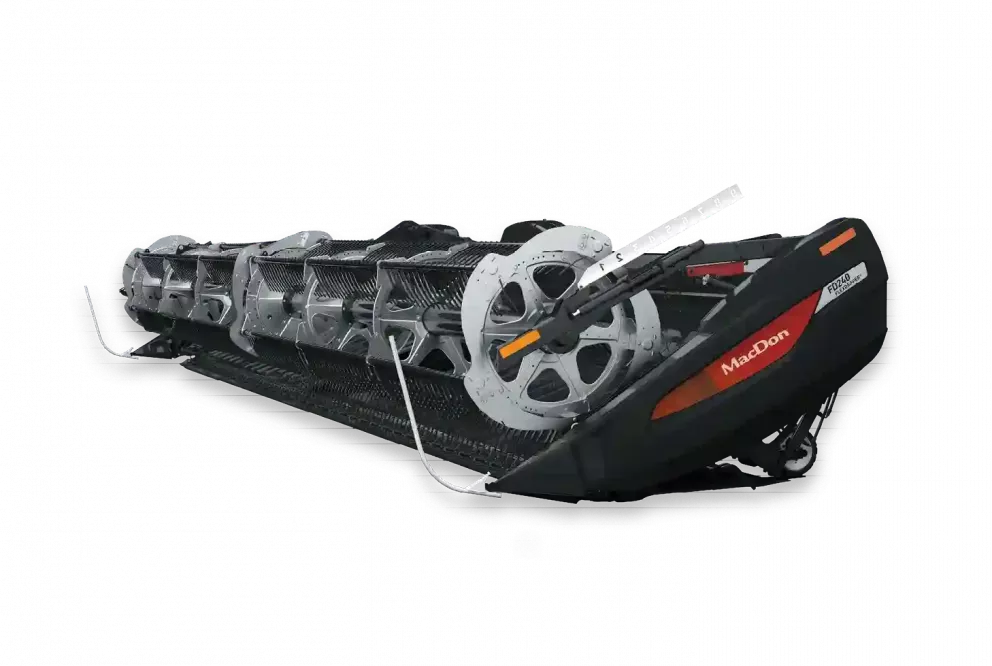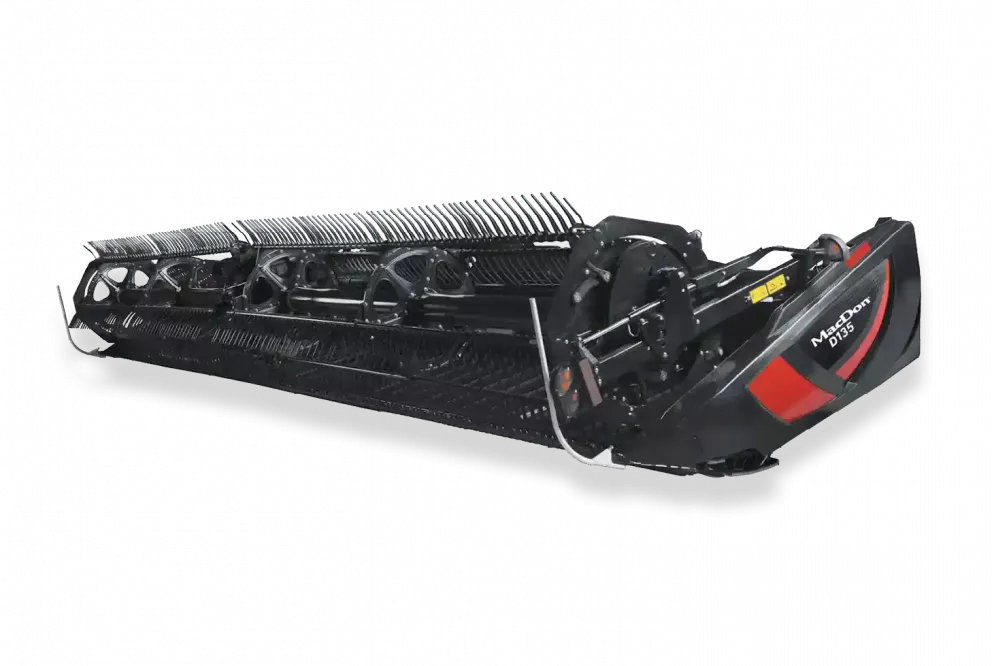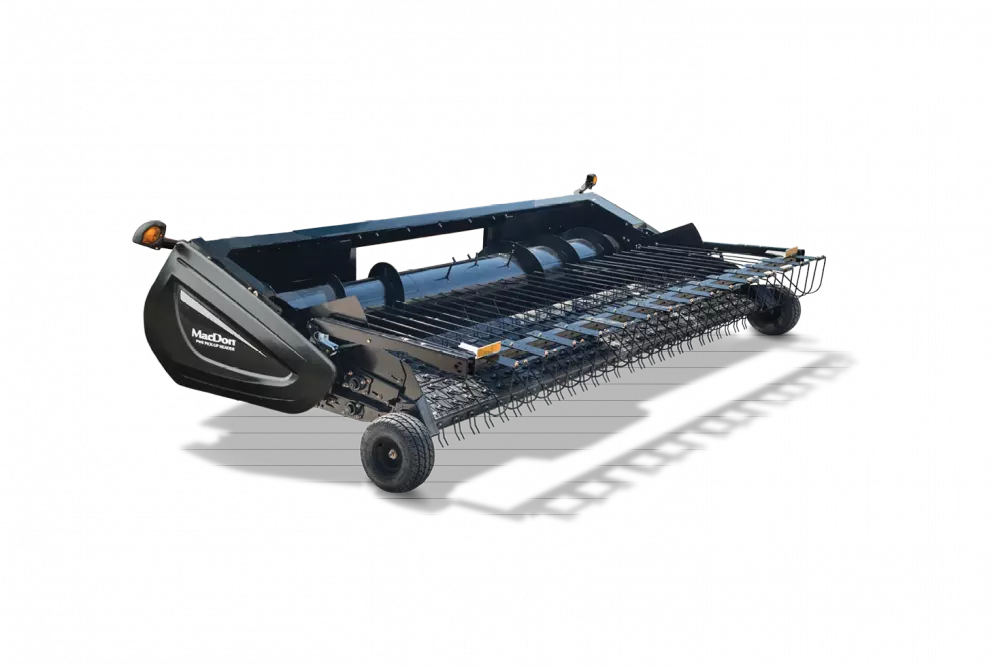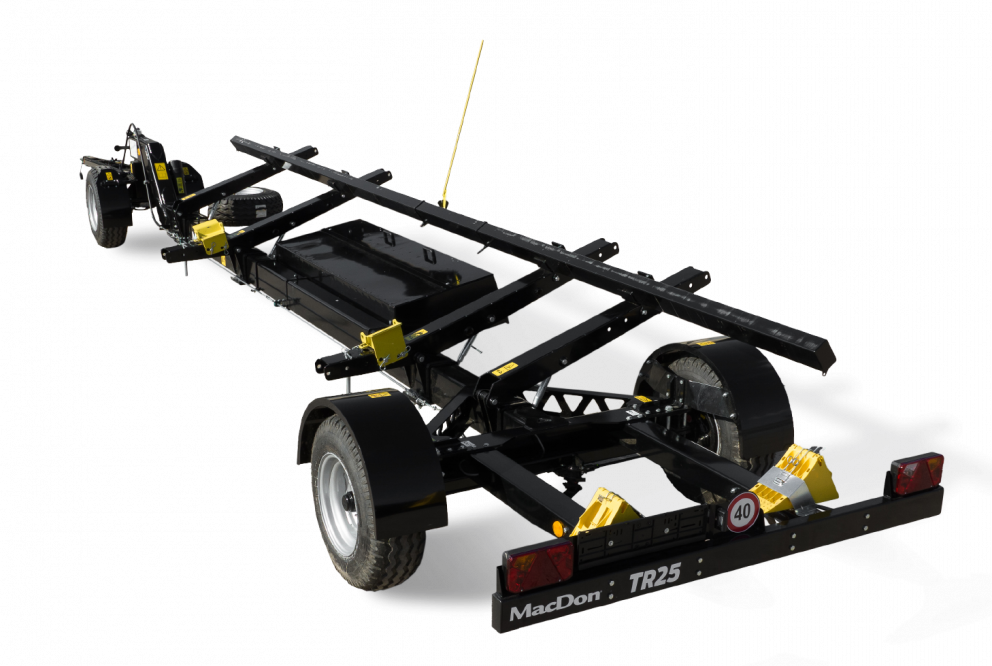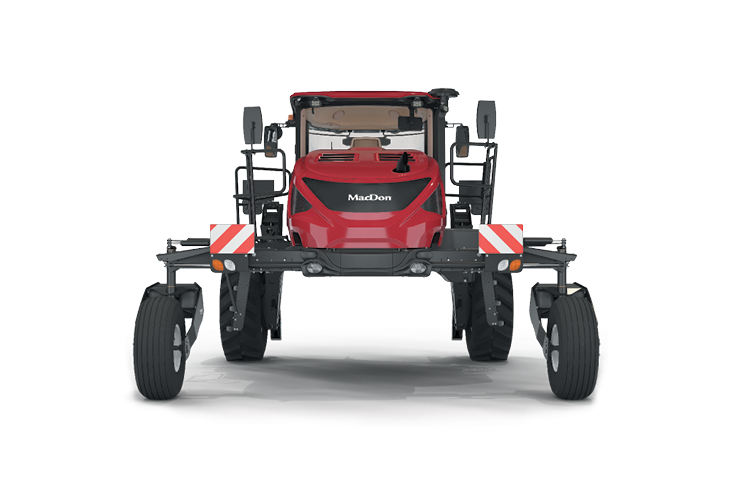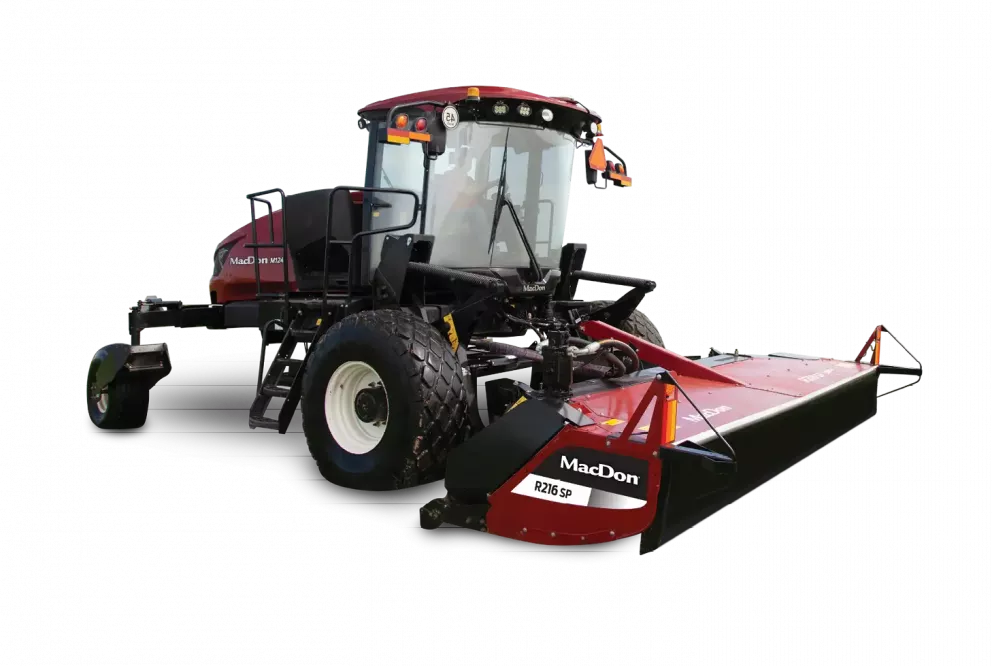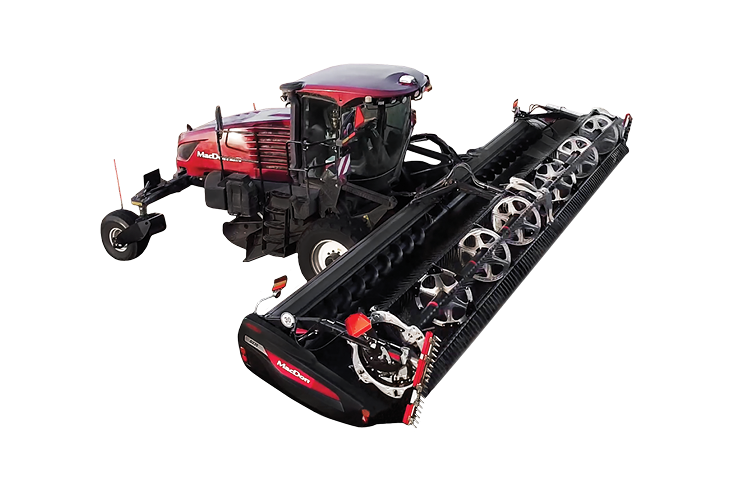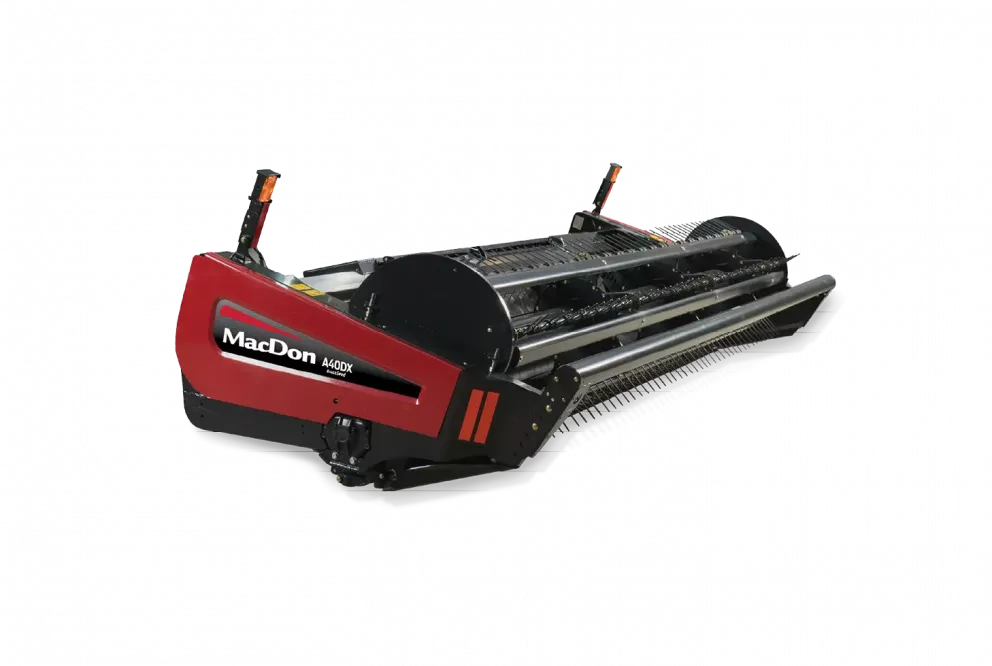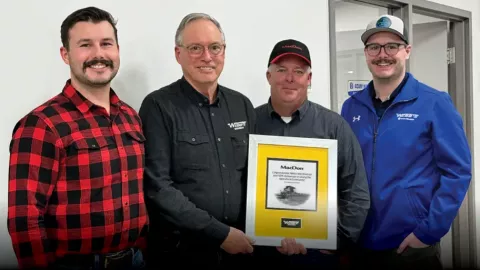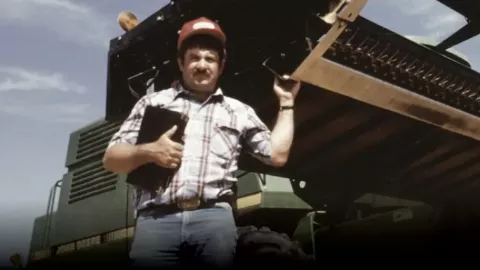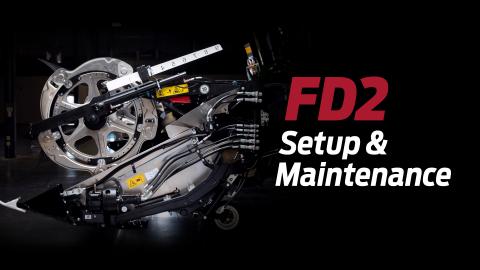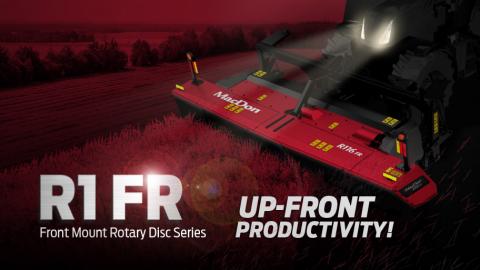Wider Possibilities From A Narrow Transport
For Danish cutter Bjarke Svensson, MacDon's Narrow Transport Windrowers have changed how he works for the better.
Heads turn when Bjarke Svensson takes his farm's MacDon M1170 NT5 windrower out on the highway. It could be because his M Series swather looks like a Formula 1 racer compared to machines a generation or two ago. But, more likely, it's because most Danes haven't seen a windrower before.
"A lot of people will look at me, especially when I go through a city," said Svensson. "They must be thinking, 'What kind of machine is that?'"
The practice of swathing is still fairly uncommon in Denmark. Svensson estimates that fewer than 20% of Danish farms – and more likely 10% to 15% – currently use the practice. He says those numbers will likely increase thanks to Denmark's recent decision to restrict glyphosate use. That's because the herbicide has been an essential tool for Danish farmers, and not just to control weeds. It was also applied to hasten crop dry down, important in a country notorious for its wet weather. But now, without the chemical, farmers could face more weeds and higher moisture in their grain at harvest. Both factors can make direct cutting with a combine much more challenging.
And that's where swathing can be a solution. Not only does a windrow help the grain dry down before combining, but any weeds that may be present also dry down, making it much easier to process. The result is a more efficient running combine and better retention of grain quality.
But the benefits of swathing don't stop there. Because weeds are often cut before they go to seed, weed pressure in subsequent seasons can be significantly reduced. That's a massive advantage for organic farmers and in places where chemicals can't be relied on to do the job fully. Additionally, in pulse crops such as edible beans, weeds can smear or stain the seeds during harvest, reducing their value. Swathing them before combining minimizes the chance of staining because weeds can dry out.
"In Denmark, it is becoming more popular to windrow and then harvest with a pick-up on the combine. Farmers can usually drive a bit faster with the combine because the grain is drier. I think swathing will continue to increase as a practice over the next five to ten years."
Svensson is employed by Bramming Maskinstation, a 1,000-hectare grain and dairy operation close to the seaport of Esbjerg in Denmark's southern region. In addition to growing hay for its two dairies, the farm grew 200 hectares (494 acres) of barley, 120 hectares (297 acres) of canola, 100 hectares (247 acres) of corn, 20 hectares (49 acres) of wheat and a few hectares of peas last year. To help with the harvest, Bramming Maskingstation deploys an older MacDon M1 swather plus its new NT5 unit, which it has had for a year. Svensson says he has experience with both and appreciates the improvements made on the NT5 (the NT stands for "Narrow Transport")."
For us, when we swath our barley before we harvest, the drier grain means that we can drive a little bit faster with our combine."
"With its narrower transport width, it's much easier to drive on the road with this new windrower. That's important over here in Denmark because we have a lot of small roads, which is a problem if your machine is too big."
Specifically engineered for Europe's narrower roads, the NT5 can quickly adjust its wheelbase from 440 cm (14'5") in field mode to 349 cm (11'5") in transport mode. The switch is made from the cab and takes minutes to complete.
Road travel on the NT5 is also made easier thanks to MacDon's patented Dual-Directional seat, which spins 180 degrees when the machine is put into transport mode so that the driver can face the engine for better handling and visibility on the highway. Combined, the two features help make the machine much safer and faster on the road, capable of speeds up to 45 km/hr (26 m/h). When towing the header behind the windrower, the maximum road speed is reduced to a still swift 32 km/h (20m/h).
For Svensson, the NT5 has completely changed how he plans his harvesting day. Before, with the wider windrower, he would skip busier highways and peak traffic periods, preferring to travel in the morning or late evening when there are fewer drivers on the road. He would also avoid going through small towns or cities where the roads can get extra tight, which would often add extra miles to the journey.
"Now, with the NT5, I can move all day. It's no longer a big concern blocking other cars because you're not much wider than a car yourself. We used to have problems maneuvering in small cities and on rural roads where there's not so much space, but with this new model, it is easy to drive around. I find I can relax a bit more when I'm driving in the new one."
The ability to travel from field to field when he wants has not only made Svensson more efficient in harvesting their own fields, but it has also allowed him to pick up more custom cutting business for the farm. Last year, he was able to cut over 400 hectares (988 acres) of grass seed under contract, travelling up to 70 km from his home base to do so.
"Last season, when I was cutting grass seed a little south of here, a neighbour of the farm I was cutting must have liked the job I was doing because he phoned up my boss and asked me to cut his grass seed too."
Svensson says that travelling further for such work is also aided by the NT5's larger fuel tank and ability to reduce fuel consumption in eco mode.
"I like the fuel tank on this new machine compared to the one on our older windrower. In eco mode, I can now drive two or three days on the same tank, so I don't have to get home every day. That can save me a lot of time."
But it's not just how the NT5 handles on the road that impresses Svensson. He also loves how well it works in the field, especially how easy it is to precisely manage the header using the NT5's Harvest Performance Tracker display. The display tracks key harvesting data and lets the operator program up to three One-Touch Control buttons for fast return to preset positions controlling header height, tilt, cutting speed, reel and draper operation. There's no more guesswork or fiddling with controls every time you start a new pass.
"If you set the header height with one of the buttons at, say, five centimetres, then every time you hit the button, the header goes to exactly five centimetres. That takes a lot of stress out of harvesting."
Easier to operate in the field and easier to drive on the road, Svensson says that from an operator's point of view, the NT5 is a winner.
"When I'm driving this new MacDon over the old one, I feel a lot better when I get home, a lot more relaxed."
Svensson believes that there is only one option for other Danish farmers who may be considering a windrower for their operations.
"I can tell them if they are thinking of buying MacDon; it's a very good quality machine."
